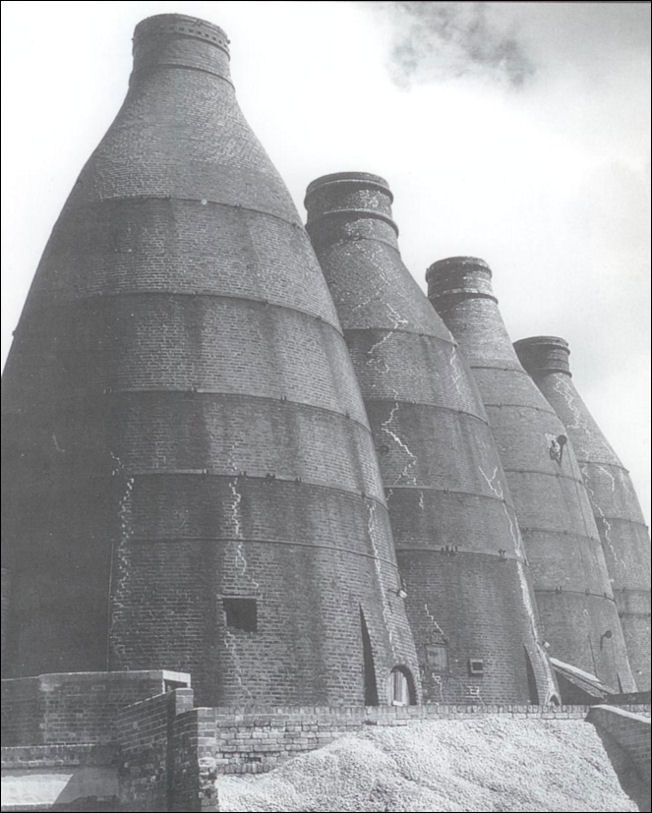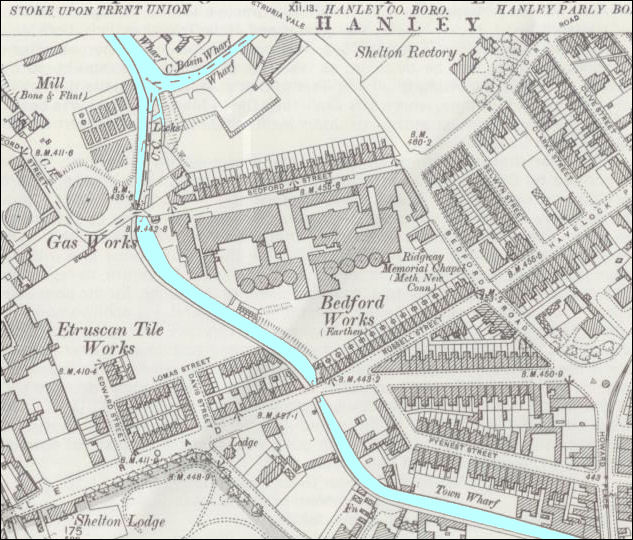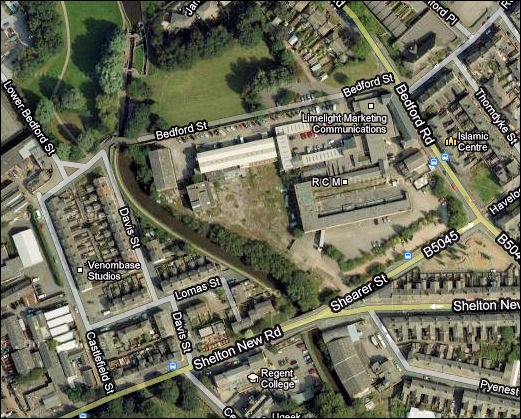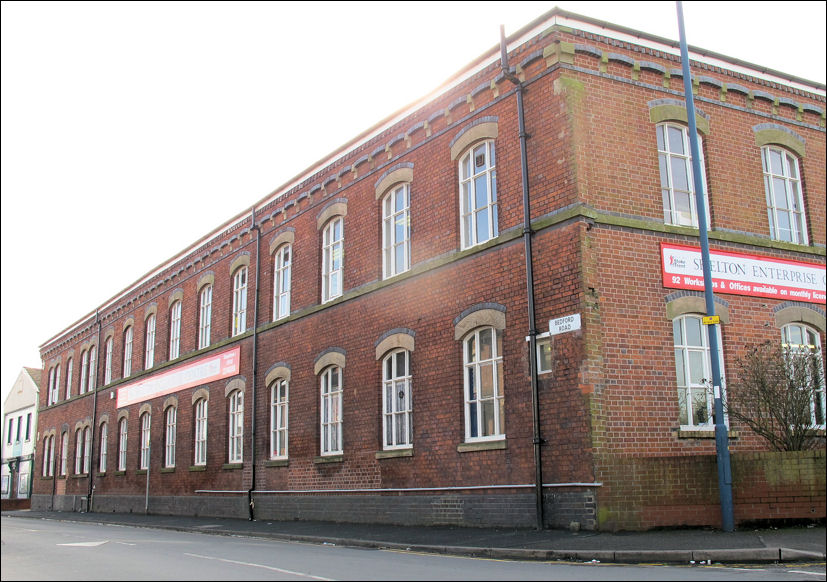![]()
|
|
|
|
|
Stoke-on-Trent - Potworks of the week |
Advert of the Week
Photo of the Week
Ridgway's
Bedford Works

Ridgway's Bedford Works - 1958
photo: © Donald Morris - 'The Potteries
- a photographic record'
Four of the
eight enormous botle kilns of the Bedford Works, on the Caldon Canal, Shelton.
The huge height can be estimated by the size of the doors giving access to the
kiln inside.
"..a
fantastic collection of narrow-necked jars or bottles peeping above the
house-tops on every side,
looking as if giant biblical characters, after a search for oil or wine, had
popped them there, among the dwarf streets"
J B Priestley, English Journey

The Bedford Works - 1898 map

Google maps - 2010

The frontage on Bedford Road
is all that remains intact
some parts of the workshop buildings can be found at the back of the range
to the right is the Ridgway Memorial Chapel (now an Islamic Centre), which can
be seen on the 1898 map above
- the Ridgway family were strong Methodists -

looking up Bedford Street
from the canal - to the right is the side of the former works
some of the original wall is retained

looking along the Caldon
Canal from the bottom of Bedford Street
part of the wall Bedford Works can be seen on the left
photos: Feb 2011
|
A mark used by the Ridgways Bedford Works from around 1950.
"Ridgways, at Bedford Works, Shelton, was founded by Edward J. Ridgway, son of the famous Master Potter William Ridgway of Hanley. Well-known in the ceramic industry in the eighteenth and nineteenth centuries, Job and George Ridgway, of Shelton, are mentioned on Allbuts' map of 1802, and in 1820 they were making extensively for the American market, being among the leading potters supplying the New World with decorated wares-showing American buildings, scenery, arms of the United States, portraits of Washington and other Americana. John Ridgway was honoured by being appointed Potter to Her Majesty Queen Victoria and earned high commendation at the 1851 Exhibition. The catalogue informs the Victorian public that 'The Establishment of Mr. Ridgway is one of the largest and among the best conducted of the many factories of Staffordshire'." From a 1956 book 'British Potters and Pottery Today'
Memories of Lilian Fowler - a worker at the Bedford Works "I was born in 1936 in Mount Pleasant, Shelton, a few doors away from the entrance to the air raid shelter (know as The Tunnel) which was under the ruck. Various people have told me that the ruck was also known as Scotchman's Hill, although I never heard this name. My mother was the warden there until we moved to Carmountside, Abbey Hulton, in 1943. I remember that there were three tier bunks for people to sleep on, my two older brothers slept on the top ,me on the middle shelf and my mother and baby brother on the bottom and one of my earliest memories of that time is wearing a 'siren suit' to keep me warm. I also remember the Mickey Mouse Gas Masks, and that my brother who was only six weeks old at the beginning of the war, being put in a kind of cradle. I still have my own identity card from those years.
I was christened at St. Mark's Church and attended St. Marks Mission, which was sited on the corner of the Mount Pleasant alleyway and Clough Street, I think the Church Army were also involved, because I was a Church Army Sunbeam and I seem to recall that Captain Haynes ran the Sunday School. I attended Shelton Infants School and both of my older brother's transferred from Shelton School to Cannon Street Senior School. Alma mentions Dudley's house, which also struck a cord, as I think that Mr. Dudley was the caretaker for the Mission and had a daughter named Maureen.
Best Wishes |
|
Related pages John Ridgway & Shelton. - Walk around the Howard and Cauldon Place area of Shelton in the 1850-1890 period. The Ridgway pottery family and the development of the streets and houses. also see.. Advert
of the Week
|